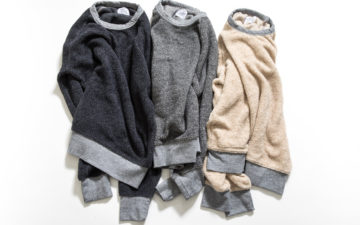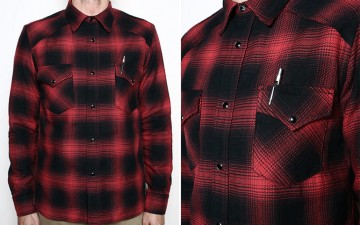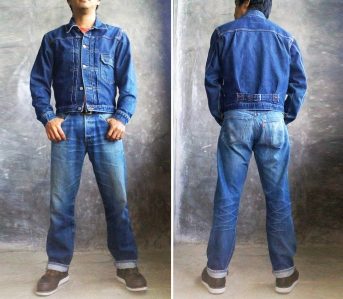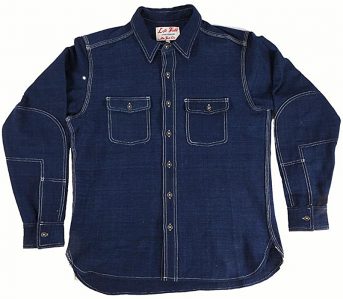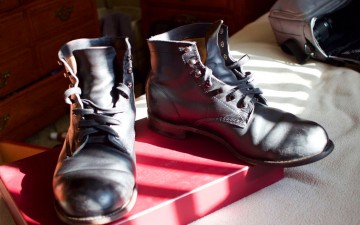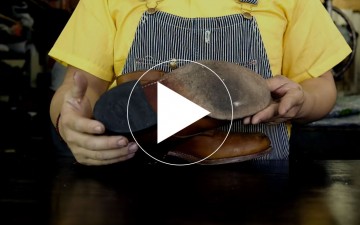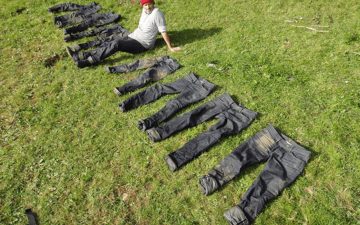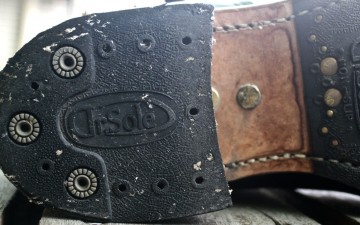The company now known as Wolverine World Wide states that their goal is to be recognized as the “World’s Premier Non-Athletic Footwear Brand” and also to “generate stockholder value through consistent economic returns,” while also, “[ensuring] the entire organization is following a market-driven and consumer-based operating philosophy.” From folksy, turn-of-the-century roots to modern business jargon, the little company from Rockford, Michigan has changed a lot since the glory days. Now an enormous conglomerate, Wolverine may have the business chops, but this has come at the cost of a cohesive reproduction line.
Wolverine’s Philosophy and History

G.A. Krause, founder of Wolverine. Image via Wolverine.
The founding of Wolverine was about as hard-scrabble as these kinds of stories come. The founder of Wolverine, G.A. Krause had a dream of someday opening his own tannery and shoe company, and he and Frederick Hirth (an uncle and co-founder curiously not mentioned on the Wolverine website) opened a store in Grand Rapids, Michigan. In 1883, the purchase of this small leather shop marked the first step towards the founding of the company.
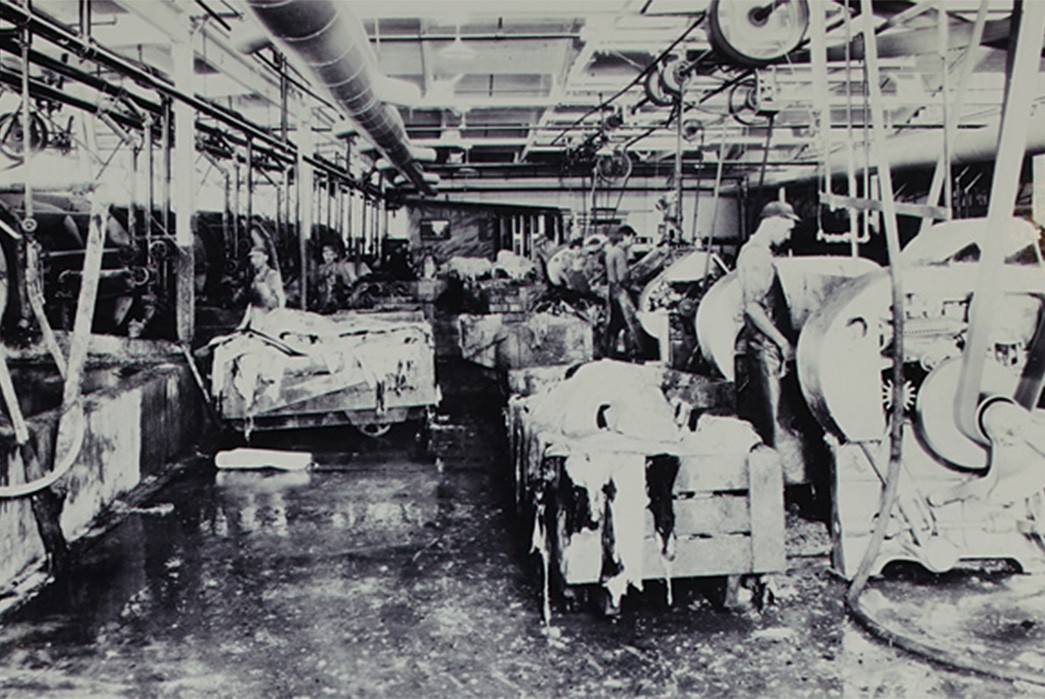
Interior Wolverine tannery in early 1900s. Image via Wolverine.
The hard-scrabble part of the story comes here, when Krause had to purchase the Rogue River Electric Company in 1901 in order to bring power to Rockford, Michigan. To realize his dream of establishing his own shoe company, it wasn’t enough to simply build the factory, Krause had to buy the electricity too. But all the hard work and electricity was worth it, because by 1903, the factory was running smoothly, making nearly 300 pairs of shoes a day.
In 1908, the company purchased their own tannery to control the raw materials as well. The leather would be treated and the shoes made under the name, Krause-Hirth until 1921, when the name changed to the Wolverine Shoe and Tanning Corporation. With the eldest Krause son’s engineering skills (Otto) and the younger’s tanning expertise (Victor), things were well on their way.
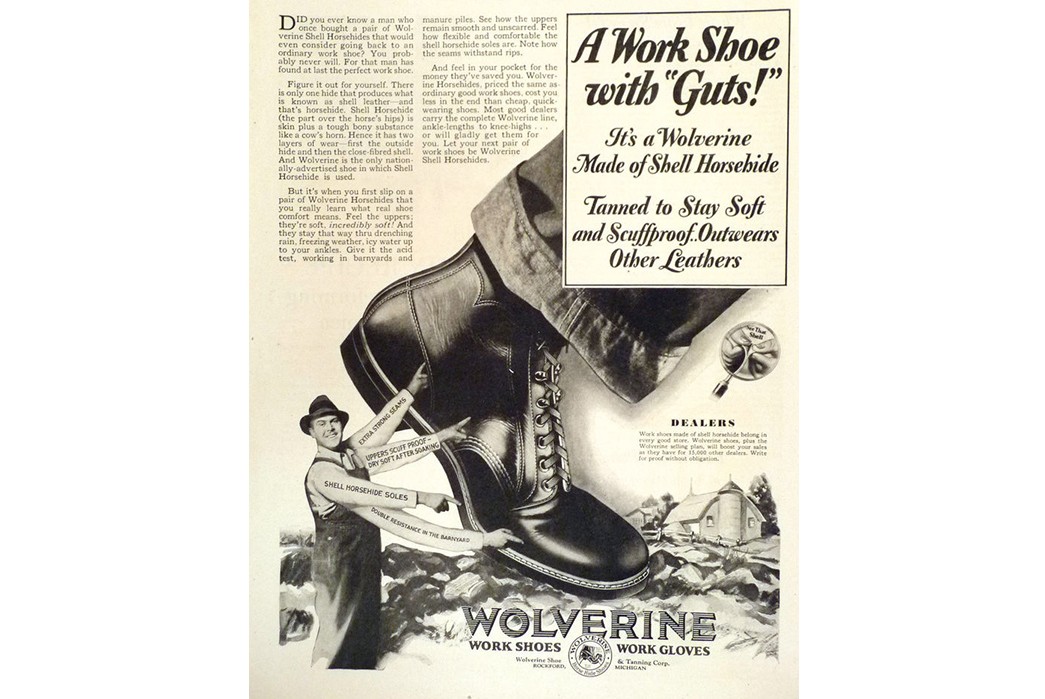
Vintage Wolverine Ad. Image via Ebay.
Once Wolverine had their own tannery, they began experimenting with their leathers until they hit upon the discovery that made their boots famous. Victor Krause visited master tanner, John Pfingsten, in 1909, which may have yielded the inspiration for the discovery that set the boot-makers apart. He was the first to make shell cordovan horsehide, a leather from the rear of the horse, which had previously been considered too stiff to use at all. His revolutionary discovery allowed Wolverine to completely stop using more expensive cow leather and further soften the horsehide. At that point, with little break-in and the guarantee that they’d last the wearer “1,000 Miles”, Wolverine’s boots were an ideal choice for workers who needed something strong, affordable, and of course, comfortable.
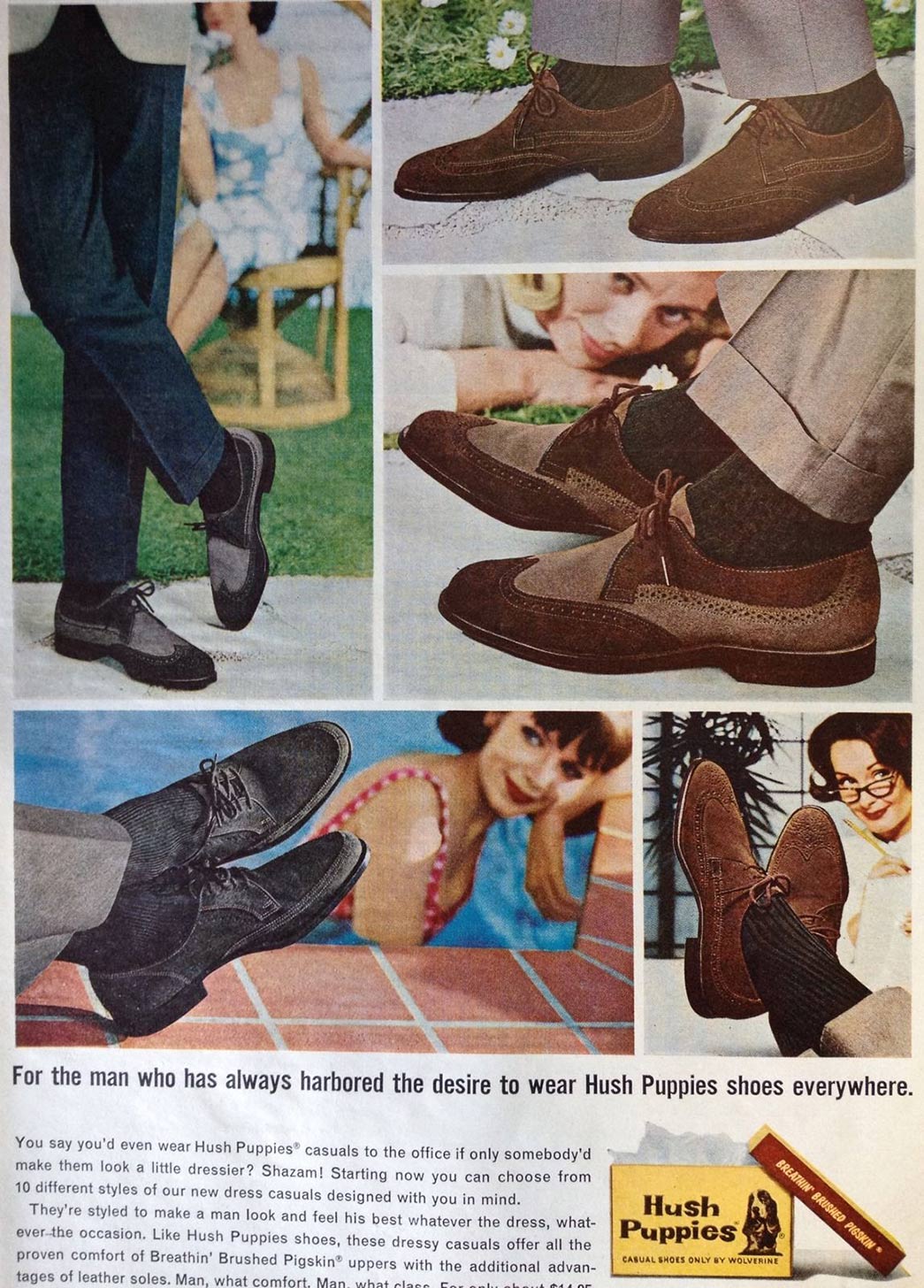
Hush Puppies. Image via Pinterest.
Later, during World War II, like many other American boot-makers, Wolverine worked closely with the American government. Their task was not to produce boots for American GIs, but instead they were tasked with developing an affordable and durable pigskin leather for use in gloves. The Krauses believed the cheaper and softer pig’s leather was a logical choice for boots as well, but getting the skin off the pigs was something of a debacle. An employee is quoted as saying, “It looked like these pigs didn’t care to be skinned.” The problem was eventually solved, but only after Victor Krause stepped down from the chairmanship to focus on creating a special machine to… well, skin pigs.
The wartime invention of pigskin suede in the Wolverine tannery, led to the creation of the the first of many Wolverine offshoots, Hush Puppies. The 1958 creation of Hush Puppies (which were apparently totally irresistible to the ladies, as shown above) was a harbinger of things to come. While continuing to pioneer new, more comfortable footwear, the brand strayed further and further from the original horsehide shell boot designed for the trials of the “barnyard and manure pile.”
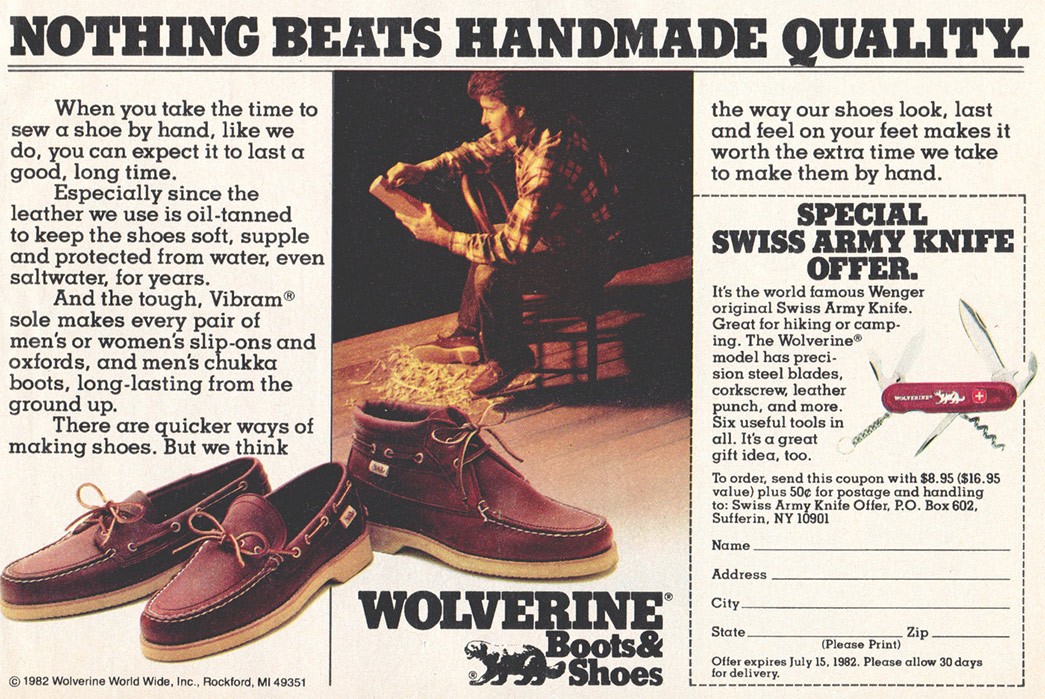
Wolverine Chukka Boots 1982 Ad. Image via Advertisement Gallery
With the arrival of the 60s, everything changed for Wolverine. In 1965, the company went public with a listing on the New York Stock Exchange, and with an eye to the global market, changed their name to Wolverine World Wide Inc. The Krause family left Wolverine in the 70s, when imported athletic footwear was giving American workboots a run for their money. But the company survived, thanks in large part to a resurgence in the 1990s—thank the likes of David Bowie and Jim Carrey for making Hush Puppies cool again and getting Wolverine back on track.

David Bowie in Hush Puppies. Image via Pinterest.
Wolverine Today

Wolverine Worldwide Inc. HQ. Image via Wolverine Worldwide.
The Wolverine of 2017 would certainly give G.A. Krause a shock, and not just for its access to electricity. Far from its humble beginnings, the brand has become a huge enterprise. It now owns Merrell and Hytest Footwear, and produces a line of motorcycle wear for Harley-Davidson. More recently, Wolverine bought Sperry Top-Siders, Sebago, and even Saucony.
While 80% of Wolverine’s sales are right here in the U.S. and Canada, 85% of their shoes are produced by third-party manufacturers in South-East Asia. But the company still owns two U.S. factories, one in Arkansas, and the other where it all started, in Rockford, Michigan.
Key Characteristics/ Iconic Product
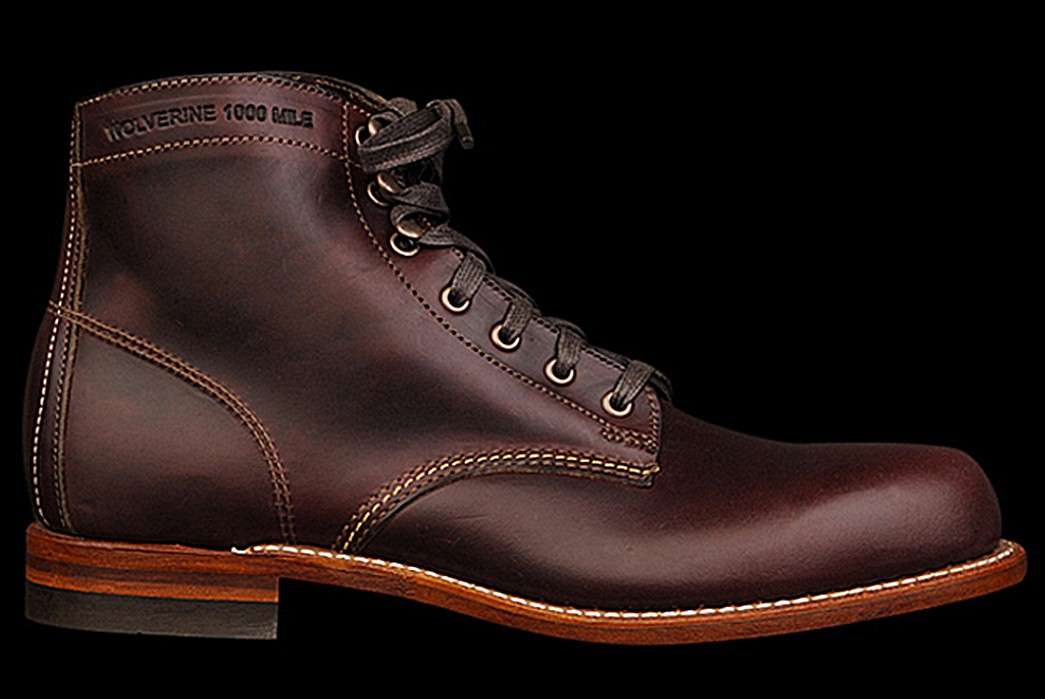
1000 Mile Boot. Image via Unionmade.
The trouble with identifying the key characteristics of a pair of Wolverine Boots is that their heritage line is not as stream-lined or authentic as that of say, Red Wing. While the above boot—the famous 1000 Mile—is a recreation of the original, many of the other premium boots sold by Wolverine are just made in a repro-style. A vintage pair of Wolverine boots, however, would have been made with the revolutionary shell horsehide leather and probably had a plain toe and stacked heel, much like the reproductions do these days.
And to be clear, that’s not at all a criticism of the company nor of the above boot, just a reminder that Wolverine’s product history is more opaque than some. Wolverine produces a line of premium, USA-made boots that are goodyear-welted and made from Chromexcel Leather from Horween Tannery, because we at Heddels can’t identify the veracity and authenticity of the other models, we’re only giving Iconic Product-status to the 1000 Mile Boot above, which is available from our pals at Unionmade for $360.
The Final Say
Though the company remains rooted in the leather pioneer folklore of the early-twentieth century, Wolverine’s history gets a little bogged down in murky dealings and the acquisition of seemingly countless footwear brands. But somewhere buried deep in their “consumer-based operating philosophy” is the wild (and true) story of an entrepreneurial family who brought light to Rockford, Michigan and discovered there’s really only one good way to skin a pig.

